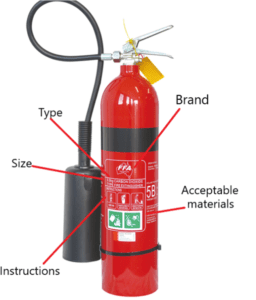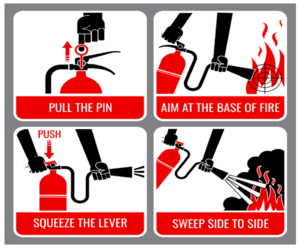INTRODUCTION:-
A fire fighting system is an important safety feature in a grid substation, which is a facility used for transforming voltage levels of electrical power and transferring it between different parts of an electrical grid. Grid substations typically contain high-voltage equipment, such as transformers, switchgear, circuit breakers, and other electrical components, which pose potential fire hazards due to the high energy levels involved. Having a fire fighting system in place helps to mitigate the risks associated with fire incidents and protect the substation and its equipment from damage.
Here are some common components of a fire fighting system in a grid substation:
- Fire Detection Systems: These systems use various types of sensors, such as heat detectors, smoke detectors, and flame detectors, to detect the presence of fire or smoke in the substation. When a fire is detected, the system triggers an alarm to alert personnel and initiates the appropriate response actions.
- Fire Suppression Systems: These systems are designed to extinguish or control fires once they are detected. They typically include fire suppression agents, such as water, foam, or gas, which are released through nozzles or sprinklers to suppress the fire. The type of fire suppression system used in a grid substation will depend on factors such as the size of the substation, the type of equipment present, and local regulations.
- Fire Fighting Equipment: Grid substations may also be equipped with fire fighting equipment, such as fire extinguishers, hoses, and fire blankets, which can be used by trained personnel to manually extinguish small fires or contain them until the fire suppression system is activated.
- Emergency Response Plan: An emergency response plan is an essential part of a firefighting system in a grid substation. It outlines the procedures and protocols to be followed in the event of a fire, including evacuation procedures, communication protocols, and roles and responsibilities of personnel involved in fire response.
- Training and Drills: Regular training and drills for substation personnel are crucial to ensure that they are familiar with the fire fighting system and know how to respond effectively in case of a fire. This may include training on fire detection and suppression systems, proper use of fire fighting equipment, and emergency response protocols.
- Maintenance and Testing: Regular maintenance and testing of the firefighting system are important to ensure its reliability and effectiveness. This may include inspections, testing of fire detectors and suppression agents, and maintenance of fire fighting equipment according to manufacturer’s recommendations and local regulations.
There are various types of fire extinguishing systems based on the type of fire and the fuel for combustion.A few of them are discussed below in this article.
- CARBON-DIOXIDE EXTINGUISHING SYSTEM:
There are two general methods of applying carbon dioxide to extinguish a fire.
- Total flooding system:
This creates an inert atmosphere within an enclosure in which the hazard is located. This inert atmosphere in the enclosure is maintained for some time till extinguishment is completed. This method is used in Generators.
- Local application:
In this method, carbon-di-oxide is applied to the affected area and no enclosure is needed around the hazard. The carbon-di-oxide engulfs the affected area completely and the period of discharge should be sufficient to completely extinguish the fire without any possibility of re-ignition. Discharge time should be at least 30 seconds. Ex–portable CO2 fire extinguisher. This method is used in the Main control room, UCP floor, Turbine floor, Switchyard control room, Valve house control room, etc.
- EMULSIFIER TYPE FIRE PROTECTION SYSTEM FOR TRANSFORMERS:
The term “EMULSIFIER” refers to the use of water that has a pre-determined
Pattern, a particular size, velocity, and density. The water is discharged from specially designed nozzles.
- SMOKE DETECTORS:-
Smoke detectors operated an automatic atomized water spray system for the protection of the cable spreading room.
- HYDRANT SYSTEM:-
In the hydrant system, water under pressure (7.0Kg/cm2) is available in the cabinet. By opening the outlet valve and using a pipe water under pressure can be applied manually to the affected areas.
For more related to fire detection please visit https://www.electricalvolt.com/category/automation/fire-and-gas-system


How to use a fire extinguisher
Precautions against Starting of Fire
•Portable fire fighting sets and fire hydrant locations should be avail
•Removal of rubbish, packing wood items from the site
•Special care to no smoking, no warming up the fire, no loose connection of cables
•Training of personal and rehearsals for electrical safety
•No storage of inflammable in the general store
Summary
The cost of a fire fighting system in a grid substation will depend on factors such as the size and complexity of the substation, the type of fire detection and suppression systems used, and local regulations. It’s important to work with experienced engineers and fire protection professionals to design and install a fire fighting system that meets the specific requirements of the grid substation and complies with applicable codes and regulations.

